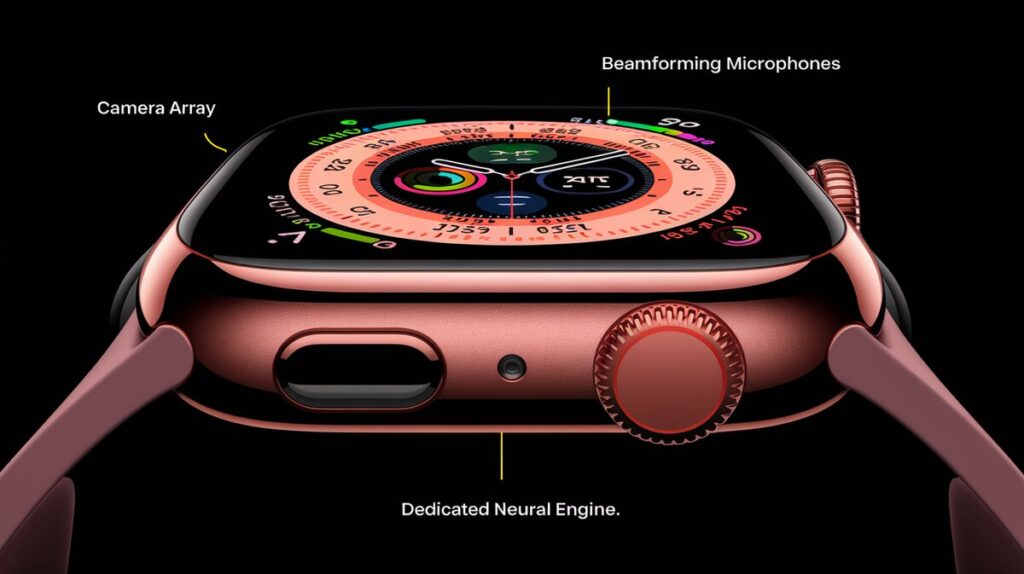The Apple Watch, often an unanticipated necessity, gains its utility after just a few days on your wrist. Anticipation is building as it’s poised for an update at today’s “Glowtime” event at Apple Park, hopefully accompanied by insights into Apple’s advanced AI technologies.
I recently upgraded to the Apple Watch Ultra 2 and passed my previous model to my wife, who quickly discovered its utility for a simple yet essential feature—notifications. The ease of accessing Siri and glimpsing at life’s essentials without reaching for a phone sparked a thought: Is the Apple Watch on the brink of becoming the ultimate AI wearable?
Devices like Meta’s Ray-Ban smart glasses present an intriguing form factor by integrating ear-level sound and eye-level cameras, offering the AI a perspective on the user’s environment. Yet, wearing glasses isn’t comfortable for everyone. In contrast, a watch, especially with the right band, sits unobtrusively on your wrist, often forgotten in daily wear. The Apple Watch Ultra 2, while already boasting some impressive hardware, lacks a few key features that could elevate it to AI wearable status, namely a camera and beam-forming microphones.
What the Apple Watch Needs to Become an AI Wearable
Currently, the Apple Watch Ultra 2 impresses with its AI capabilities. When diving into the research, I found many concepts I thought necessary for an AI-centric watch were already integrated. However, the absence of a camera remains a significant limitation.
The Ultra 2’s existing features include an ultra-wideband (U1) chip, facilitating spatial data collection. This chip enables location-aware functionalities such as turning on lights as you enter a room or sending a coffee order with precision. An innovative double-tap gesture recognition allows users to perform tasks with subtle finger movements, pushing the envelope of what the device can achieve autonomously. Health monitoring sensors, on-device Siri, and a neural engine hint at the potential for a comprehensive AI assistant.
Camera Array for Gesture and AI Vision
A critical upgrade that the Apple Watch could benefit from is a sophisticated camera array. This addition would enable multi-angle gesture detection and AI vision capabilities, essential for 3D gesture control. Strategically placed cameras could capture depth and motion from various perspectives, feeding valuable data into AI models for better contextual understanding.
Such cameras could revolutionize fitness tracking, making it touch-free and enhancing accessibility features. Depth-sensing could also allow the AI to interpret and provide insights on surroundings, such as identifying landmarks, food items, and other products efficiently.
Dedicated Neural Engine
While the current S9 chip with a neural engine primarily handles health-related machine learning tasks, a dedicated neural engine geared towards AI assistance could significantly transform the watch’s capabilities. This would not only improve energy efficiency and on-device processing speeds but also enable offline functionality such as Siri responses and image analysis. Enhanced personalization would make the watch more responsive and adaptive, reducing reliance on an accompanying iPhone.
Beam-forming Microphones
The Apple Watch Ultra 2’s microphone setup can handle everyday commands but struggles in noisy environments. Introducing beam-forming microphones would enhance voice recognition accuracy, crucial for effective AI interaction. This technology would filter ambient noise, ensuring clear command recognition even amidst heavy traffic or loud gyms, a boon for runners and cyclists who rely on Siri without breaking stride.
Additionally, these microphones would detect voice commands from a distance, eliminating the need for users to move their wrists to speak to Siri. Paired with targeted speakers or even AirPods, this improvement would make voice interactions seamless in any environment.
Final Thoughts
The Apple Watch is already a versatile device, allowing quick calls, notification viewing, health and fitness monitoring, and Siri interaction. It leverages AI significantly in these tasks, hinting at its potential to evolve further.
As Siri becomes more conversational and smart devices increasingly integrate AI, the Apple Watch is positioned to lead as a premier AI assistant. While competing innovations like Meta’s Ray-Ban and other AI pins gain attention, the Apple Watch stands out, needing just a few key enhancements to claim its spot as the ultimate AI wearable.


